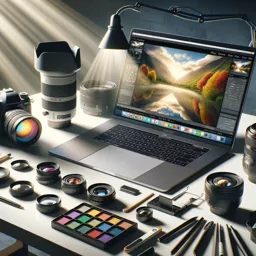Introduction to Underwater Photography
Underwater photography is a fascinating field that lets you capture the vibrant aquatic world in all its glory. Whether you’re glimpsing the colorful dance of fish or the shifting patterns of sunlight beneath the waves, photographing underwater environments requires special techniques and equipment. In this article, we’ll explore how to get started with underwater photography and share practical tips for capturing breathtaking images beneath the surface.
Choosing the Right Gear
Successful underwater photography starts with the right equipment. At a minimum, you’ll need a camera with manual settings, an underwater housing to protect your gear, and, ideally, an external strobe or flash for lighting. Many modern action cameras and waterproof compact cameras are great for beginners, but for more control and image quality, consider a DSLR or mirrorless camera with an appropriate housing.
Mastering Underwater Lighting
Light behaves differently underwater, often resulting in images with a blue or green cast. To bring out the true colors, use artificial lighting such as strobes or flashes. Position your lights at an angle to reduce backscatter (light reflecting off particles in the water) and to highlight your subject’s natural colors. Don’t forget to adjust your white balance to correct for color shifts.
Tips for Capturing Sharp Images
- Get Close: Water reduces contrast and sharpness, so move as close to your subject as possible without disturbing it.
- Stabilize Yourself: Practice good buoyancy control to remain still while shooting, which helps avoid blurry photos.
- Use Fast Shutter Speeds: Aquatic life moves quickly and so do you—use faster shutter speeds to freeze motion.
Composing Your Shots Underwater
Composition is just as important underwater as it is on land. Look for natural frames, such as corals or rock formations, to add depth to your photos. Use leading lines created by rays of sunlight or patterns on the ocean floor to direct attention to your subject. Try shooting at an upward angle to capture dramatic silhouettes and to include interesting backgrounds.
Respecting the Underwater Environment
Always remember: take only pictures and leave only bubbles. Respect marine life, avoid touching corals or disturbing animals, and be mindful of your fins and equipment to protect the fragile underwater ecosystem.
Conclusion
Underwater photography offers endless creative possibilities and the chance to share the wonders lying beneath the water’s surface. With the right equipment, a good understanding of underwater lighting, and a conservation-minded approach, you’ll be well on your way to capturing stunning aquatic images.
































